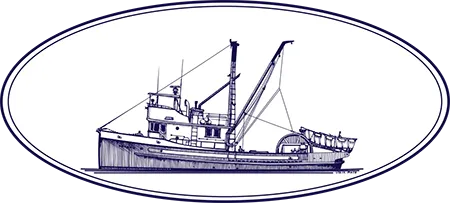The ocean makes up more than 70% of Earth’s surface, and no matter where in the world you live, it influences your life in a variety of different ways. Even though it’s one continuous body of water, it’s thought of as being divided into five sections: the Atlantic Ocean, the Pacific Ocean, the Indian Ocean, the Southern Ocean, and the Arctic Ocean. They are all different sizes and temperatures depending on where they’re located, but all of them influence the climate and provide valuable resources to animals and humans alike. Since the ocean is so important to the ecosystem and the world’s geography as a whole, learning about the history of how it was formed and the different ocean regions can be useful.
Ocean Formation
The ocean has gone through a lot of change over the past several billion years. When Earth was first formed, there wasn’t any ocean at all for the first billion years because it was too hot for water to condense. Once the planet started to cool, about 3.8 billion years ago, the ocean was able to form. There’s still some debate as to where the water came from. Some scientists say water in the atmosphere condensed and turned to rain, which filled Earth’s basins; others suggest that volcanic activity expelled gasses like water vapor from the interior of the planet, where the water had been for ages; and still others suggest that icy comets crashed into the planet and deposited water. Nobody knows for sure, but thanks to Earth’s position in the solar system, the water was able to stay in those basins for billions of years.
Ocean Zones
The world’s oceans are divided in different ways. One way is geographical, looking at the land that surrounds the oceans. This way of dividing things up gives us the five oceans: Atlantic, Pacific, Indian, Arctic, and Southern. But another way of dividing the oceans up is by depth. The part that’s on top and near land is the coastal zone, which gets a lot of sunlight and is home to a wide variety of plants and animals. Farther down is the open ocean, where larger creatures like sharks and dolphins live. Below that is the twilight zone, which is pretty dark: The deeper you go, the harder it is for sunlight to reach through all of that water. Even darker and colder is the next layer down, the midnight zone. At the bottom of all of that is the abyssal plain, where the water is very dark and cold and the ocean floor is very flat.
The Arctic Ocean
The Arctic Ocean is a little different from the other four major oceans on Earth because it’s much smaller and more shallow. Some scientists don’t even consider it an ocean; they suggest that it’s more of an estuary of the Atlantic Ocean, though it does have chemical, physical, and biological processes of its own. The most notable characteristic of the Arctic Ocean is the sea ice that’s commonly found in these waters, which reduces the energy exchange between the atmosphere and the ocean and the amount of light that marine plants in the ocean’s depths can get. The Arctic also has a lower salinity and temperature than other oceans; it’s the coldest ocean on the planet.
The Southern Ocean
The Southern Ocean is comprised of the southernmost waters of the world and surrounds Antarctica like a moat for a castle. It’s the fourth-largest ocean on the planet, only larger than the Arctic Ocean. It’s considered to be the mixing zone of all of the world’s major oceans, and it plays a key role in how water is circulated all over the globe. It also helps regulate the planet’s climate thanks to its currents, absorbing heat and carbon dioxide in the atmosphere and carrying seasonal sea ice.
The Indian Ocean
The Indian Ocean is the third-largest ocean and bounded by Australia to the east, the Southern Ocean to the south, Asia to the north, and Africa to the west. While there is no natural boundary that keeps it separate from the Atlantic Ocean, there’s a 2,500-mile boundary from the southern end of Africa to Antarctica that is often considered to be the official border between the two oceans. The Indian Ocean is considered the most complicated of the oceans because its existence began 180 million years ago when a supercontinent formation broke apart and collided with another supercontinent. This collision is likely why there are so many oceanic ridges and seismically active mountains on the sea floor of the Indian Ocean.
The Atlantic Ocean
The Atlantic Ocean is the second-largest ocean on Earth and is the ocean that the most people have sailed boats on for thousands of years. It’s located between the Americas to the west and Europe and Africa to the east. It began to form during the Jurassic period, about 150 million years ago, when a rift was opened up between Africa and South America, leaving behind a series of basins, continental shelves, and the Mid-Atlantic Ridge, which is 5,000 meters deep and is part of the longest mountain range in the world. There’s a gap between both sides that is just large enough for the ocean to flow through, and this gap influences the temperature and currents in the Atlantic Ocean.
The Pacific Ocean
The Pacific Ocean is the largest ocean on Earth, both in area and in depth. It’s so large that it contains more than half of all of the available water in the world. This ocean is found to the west of North America and South America and to the east of Asia. It’s divided from the Atlantic Ocean by the Drake Passage, which is a body of water between South America’s Cape Horn and Antarctica’s South Shetland Islands. The Pacific Ocean is in the oldest existing basin on the planet; it’s so old that some of the rocks found in its waters are around 200 million years old. The ocean sits atop the Pacific Plate, the world’s largest tectonic plate. Around its edges is the “Ring of Fire,” where many earthquakes and volcanic eruptions happen.
Oceans and the Water Cycle
Water is essential on Earth and exists in solid, liquid, and gas forms. It ties together all the parts of the Earth’s climate and is typically described as being part of a cycle of precipitation, evaporation, and condensation. The liquid evaporates into water vapor, moves through the atmosphere, condenses into clouds, and then comes back to Earth in the form of rain or snow; then, the water flows across the land, into the ground, and into the roots of plants. It can then evaporate from the leaves of the plants or directly from the ground, starting the process over again. The ocean plays a large role in the water cycle because most of the water being circulated comes from the ocean.
Waves, Tides, and Currents
The ocean never stands still; it’s always moving in one way or another due to external forces from the wind, sun, and moon. The three major ocean movements are waves, tides, and currents. Waves are oscillatory movements that cause the surface of the water to rise and fall as it moves horizontally across the ocean. The strength of the waves is directly related to the speed, duration, and distance of the wind at the time. Tides are a periodic rise and fall of sea levels caused by gravitational forces from the sun, moon, and Earth’s rotation. This is a vertical water movement at regular intervals of about 12.5 hours. Currents are the horizontal flow of water over great distances in a defined direction, like a river flowing into an ocean. Currents can be formed by wind and the differing densities of different waters due to salinity, gravity, temperature, and natural events. The direction of a current rarely, if ever, changes because it is influenced by Earth’s rotation.
Ocean Facts
The ocean currents regulate Earth’s climate much like the circulatory system in the human body. In this case, the ocean would be like Earth’s heart. It also has something in common with our blood: It’s salty. In fact, the ocean is so salty that there’s enough salt in it to cover the entire surface of Earth in a layer of salt that’s more than 500 feet thick. This salt comes from rocks on land and is transported into the ocean by water runoff and hydrothermal vents.
As much as we know about the ocean, there’s still a lot we don’t know. Less than 10% of the oceans around the world have been mapped. We know more about space than we do about the ocean. And since we haven’t mapped out the whole ocean, there are likely millions of oceanic species (plants, animals, fungi, etc.) that haven’t been discovered by humans yet.
- Ocean 101
- The Arctic Ocean
- Ocean Geography
- How Were the Oceans Created?
- The Southern Ocean
- All About the Ocean
- How Deep Is the Indian Ocean?
- Five Animals That Live in the Intertidal Zone
- Atlantic Ocean
- The Difference Between Waves, Tides, and Currents
- Ocean Zones
- Why Do We Have an Ocean?
- World Oceans Day
- How Big Is the Pacific Ocean?
- Five Oceans of the World
- The Law of the Ocean
- What Are the Oceans of the World?
- Oldest Oceans in the World
This page was last updated by Douglas R. Williams











